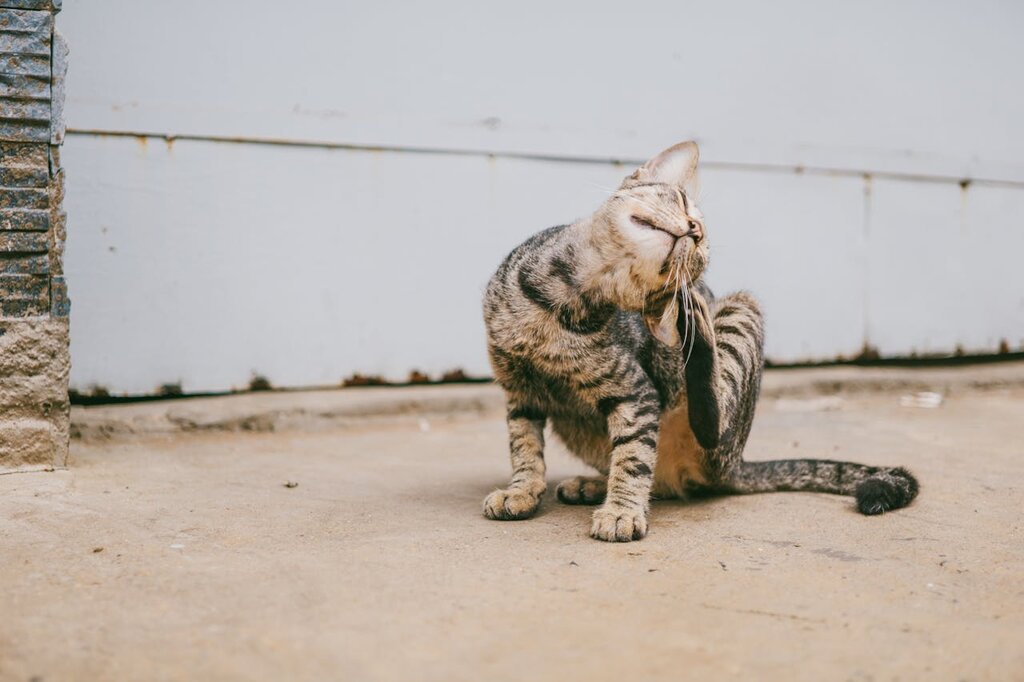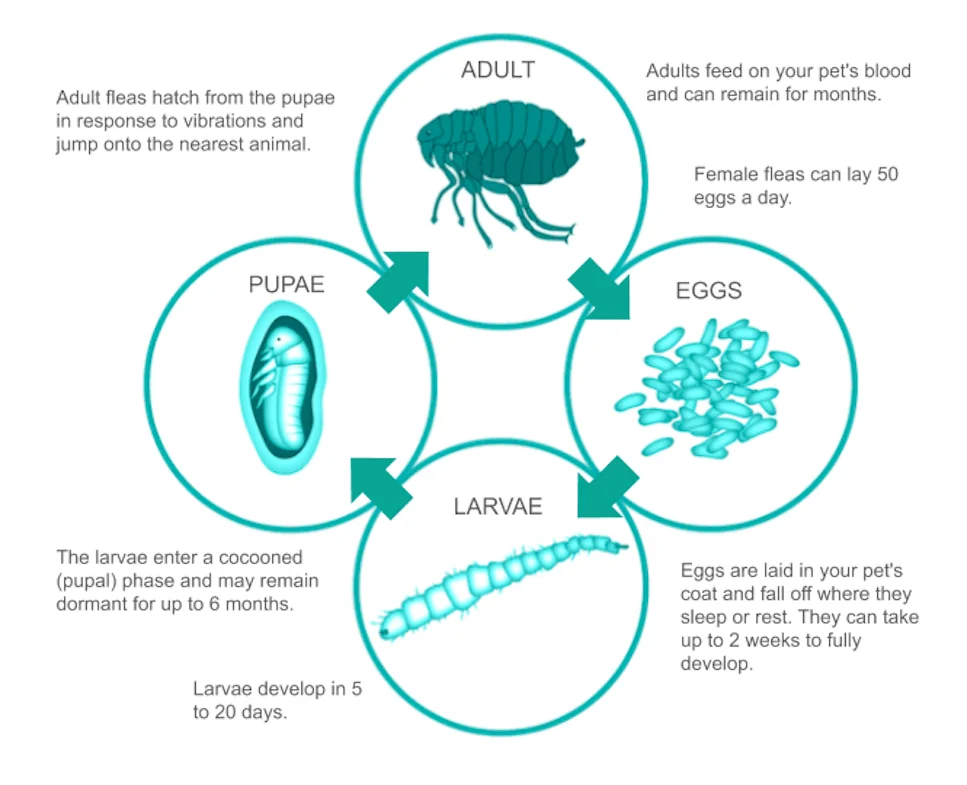To successfully get rid of fleas, you need to do more than just kill the fleas on your pet. In order to prevent your pet being reinfested, it is critical to completely break the flea lifecycle. This is why just using a short acting flea shampoo or spray alone will not be effective.
Use flea prevention year round
There are loads of super effective flea treatments for cats which can be used to both treat pre existing flea infestations and prevent them from recurring. Depending on where you live and the other preventative products you use, you may want to go with a flea only product or a combined product which covers ticks or worms as well.
Remember that the pupal stage of the flea lifecycle can remain dormant in the environment for up to 6 months. This means that juvenile fleas may continue to emerge in the environment and reinfest your pet for a few months after you start treatment. So long as your pet has flea prevention on board, these baby fleas should die soon after coming in contact with them.
Treat all pets in the household
If you have multiple dogs or cats at home, every pet needs to be treated with an appropriate flea prevention product, even if they do not appear to have a flea infestation. This is essential to breaking the flea lifecycle, as untreated pets may continue to bring fleas and flea eggs into the home environment.
Treat the environment around you
Flea eggs, larvae, pupae and adult fleas will drop off your pet into other areas of your home. Materials like bedding, toys and carpet are ideal living areas for the flea family. If your cat is suffering from fleas, about 95% of the total flea problem is likely to be in your house rather than on your cat.
Treating the environment, as well as your pet, will wipe out the infestation much quicker. Gather all of your pet's bedding and material toys and place them in your washing machine on a hot wash (60°C) with washing detergent. If you have a dryer, putting them on a hot drying cycle is also recommended. A thorough vacuum or steam clean of carpets and rugs is also important, focusing particularly around the areas where your cat sleeps, and also behind and under furniture.
Some people opt for flea bombs to help to kill the parasitic visitors in their home. If using any flea bomb or spray product, always be cautious to follow the directions closely and remove your cat from the area being treated for at least the minimum recommended time. Many environmental flea treatments, including flea bombs, can be highly toxic to cats.
Safety considerations
While treating your cat for fleas is important, there are some safety aspects you should keep in mind before you administer any medications:
- Never use dog medications on your cat! Using dog specific medications on your cat can kill them or cause severe health concerns requiring hospitalisation
- If you have both dogs and cats in your house, do not treat your dogs with any product labelled as dangerous for cats.
- When applying a topical treatment to your cat, do not allow them or another cat to groom the area until the fur is completely dry
- Weigh your cat so that you can choose the right sized dose



